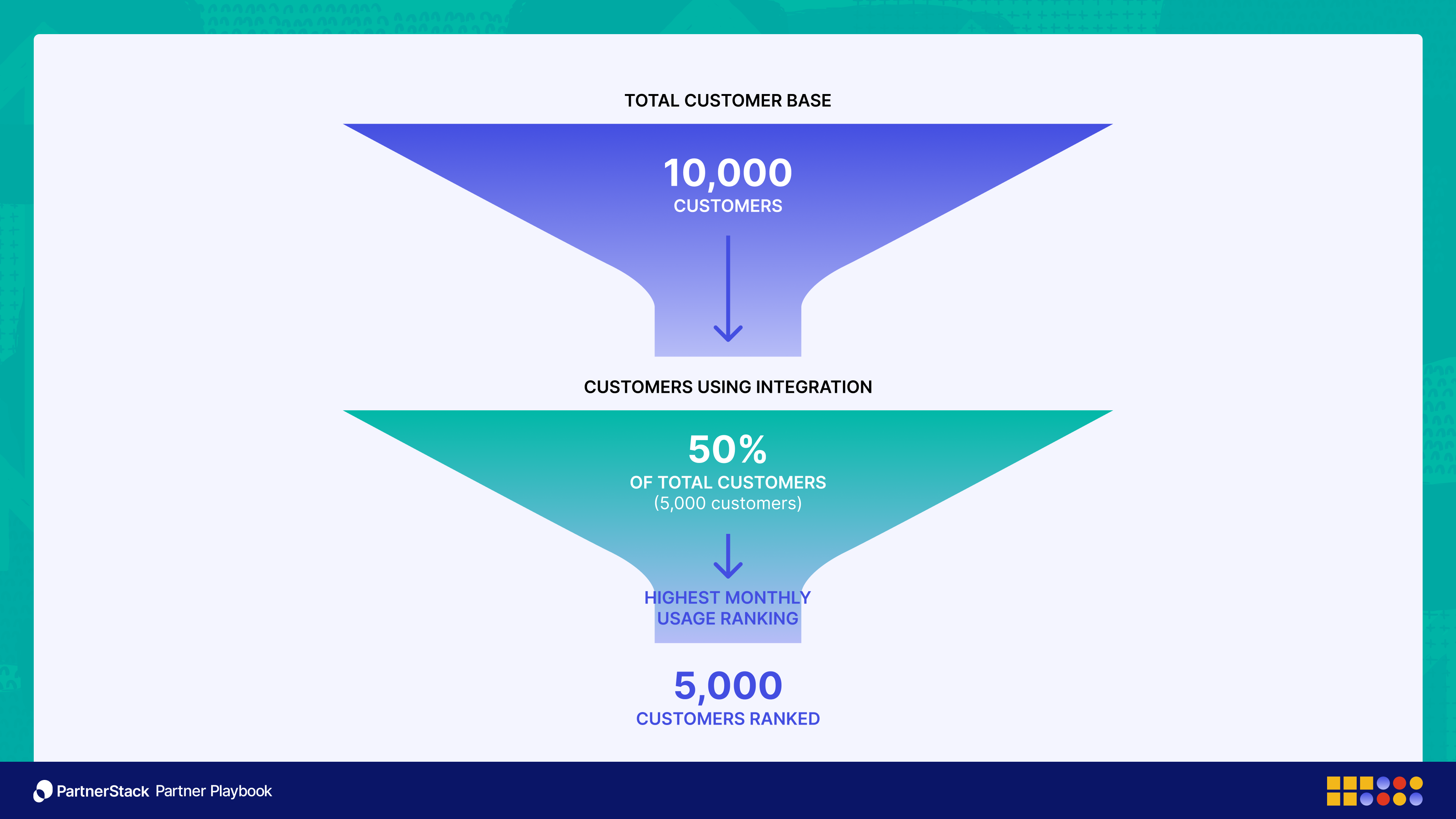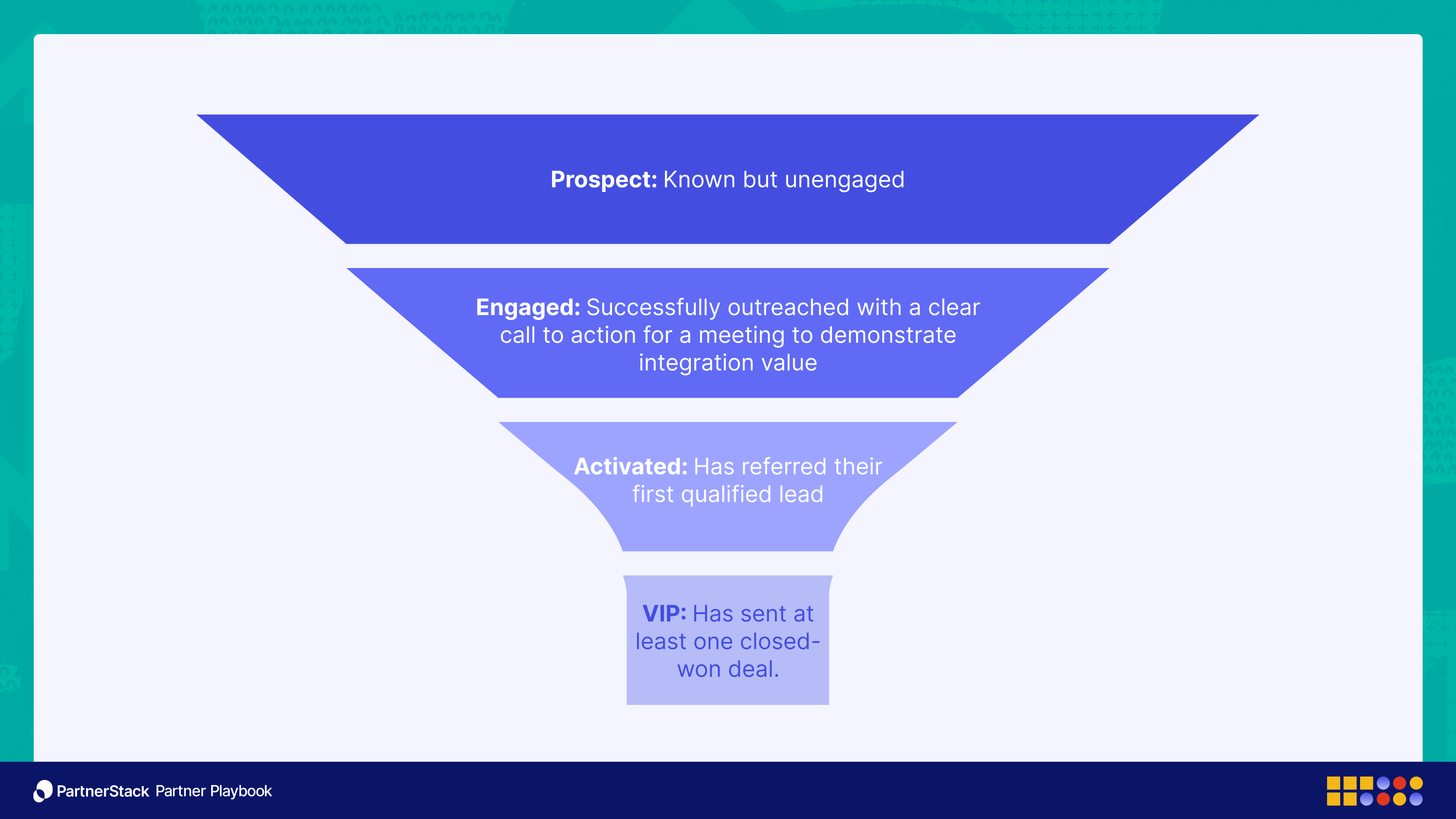Building and scaling a high-impact tech partner program
Chris Lavoie, founder of Partnership Mastermind, shares his strategic guide to growing a tech partnerships program.
Chris Lavoie, founder of Partnership Mastermind
In this expert playbook, Chris Lavoie explains when and how to grow your tech partner program for the biggest value. Having built tech partnerships at Gorgias and AfterShip before founding Partnership Mastermind, Lavoie knows how to set programs up for success even before making that first hire — and why showing real business impact often matters more than hitting 100% of a target.
Watch and listen to Chris Lavoie on Get It, Together, powered by PartnerStack.

Here's a step-by-step breakdown of how Lavoie identifies the highest value integrations and uses them to scale a tech partnerships program:


Find your most valuable tech integration and deep dive into it
Don’t worry about working with lots of partners at first, Lavoie says. Instead, identify your most valuable integration.
If you have existing tech integrations, look to usage data to figure out which ones customers use and value most. Consider:
- your mutual customer base
- integration adoption rate
- API activity or consumption
Next, get a fuller picture by talking to customers, sales account executives (AEs), customer success managers and support teams to understand how your integrations are actually being used.
If you don’t have existing integrations, you can reverse engineer by analyzing your customers’ tech stacks with tools like BuiltWith, StoreLeads and Crossbeam. Look for common point solutions, then scope out complementary use cases with your product teams and potential VIP customers.
With either method, the goal is to come up with one partner or partner candidate to be your focus. Once you have that one, go deep. Build out a GTM strategy, meet people at the partner company, enable your teams and test bringing your partnership to market.
If you can do this successfully with one partner, the experience gives you a precise playbook to replicate with others. If you can’t do it with one partner, you “sure as hell can’t do that with 10,” Lavoie says.


Demand and own your numbers
Give your partner managers closed-won sourced quotas. Sourced revenue targets make it easier for partner managers to defend their roles and justify promotions and raises, because they directly link productivity to the company’s financial outcomes. They also encourage partner managers to aim for higher quality deals and cooperate with AEs for the entire sales cycle, rather than checking out after adding a deal to the pipeline. As a bonus, sharing the same quota goals usually fosters more respect and trust between partner managers and AEs.
While your variable quota should be 100% contingent on sourced revenue (e.g., a 70% base, 30% variable split), you can also award cash bonuses when successfully partner-influenced deals close. This way, you’re rewarding influence without taking away from the focus on sourced revenue.


Set ambitious goals and stay uncomfortable
Presenting your team with net new quota models that have higher goals can be an uncomfortable conversation — but as a leader, you’ve got to do it. Get your team used to owning bigger goals instead of settling for conservative targets, because consistently hitting 80 to 90% of a huge, impactful goal is more impressive to leadership than achieving 120 to 130% of a small target.
This dream-big approach means your team will have to work harder, learn continuously and stick to best practices. But the biggest growth often comes from being in uncomfortable situations and pursuing things that scare yet excite you — something to remember as you model this mindset for your team. You want to maximize your actual scope of impact, Lavoie says, not just look “green on a chart.”


Build a systematic funnel for tech partners’ customer-facing reps
It’s individual employees, not companies, who refer deals, so your focus should be on systematically engaging and enabling customer-facing staff at partner companies. This means looking to roles like AEs, solutions architects and customer success managers, because they have the key relationships with your ideal customers.
To find these employees, you can use a third-party data enrichment tool to scrape a list of a company’s customer-facing staff.
Manage these partner customer-facing rep leads with a four-stage funnel in your CRM:
- Prospect: Known but unengaged
- Engaged: Successfully outreached via LinkedIn DMs, email, Slack, etc., with a clear call to action for a meeting to demonstrate integration value
- Activated: Has referred their first qualified lead
- VIP: Has sent at least one closed-won deal
The goal is to convert a number of these customer-facing reps into reliable champions who consistently source quality deals. This way, your program isn’t at risk if a single rep leaves the partner company.
It doesn’t take much; with five partners who have three to five VIPs, you’re “absolutely cooking,” Lavoie says.


Provide hyper-transparency and financial insight
When discussing compensation and quotas, have hyper-transparent conversations with your team. Sit down one-on-one, walk them through their comp plans and explain the underlying business logic. You can also point out that your own leadership goals are steeper to remind them that you are “in this together.”
One powerful tactic is to let your team see your department’s actual profit and loss (P&L), including labor and tool costs, showing them how hitting targets moves the department from “in the red” to “in the green.” This demonstrates how their success is directly linked to unlocking more investment and resources for your program. Full financial transparency can be a significant motivator.


Give tech partner managers an internal squad
Wait until you have at least one or two strong, validated integrations with proven value and adoption before hiring a tech partner manager.
Once you’ve brought them on board, don’t treat your tech partner team like an agency or SI and channel account managers. Instead, be disciplined and patient, and don’t leave them on an island by themselves. A tech partner manager is a totally different role because of the product complexity and long lag to expected revenue, Lavoie says, so they require significant internal support.
The way to provide it is to give your tech partner manager their own squad. This team should include at least one product leader as a sponsor, a customer success leader responsible for driving adoption and a marketing person to communicate the value of the integration. A single tech partner manager can’t effectively lead all aspects of product development, adoption and commercialization alone, so this collaborative approach is key to success.
Put these steps into play, and you can start — and scale — your tech partnerships. PartnerStack is with tech partnership teams at every stage, from helping you recruit that first integration to tracking performance to see how your team is matching up to your goals.

Meet Get It, Together expert guest Chris Lavoie:
This partnerships expert is experienced in building technology partnerships and the founder of Partnership Mastermind.
Learn the secrets of partnerships success
Sign up for our newsletter to enjoy premium partnerships and ecosystem content you can’t get anywhere else.
By submitting this form you agree to PartnerStack's Privacy Policy.















